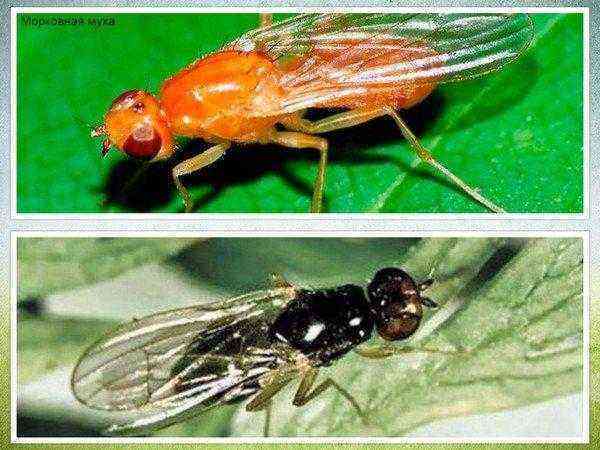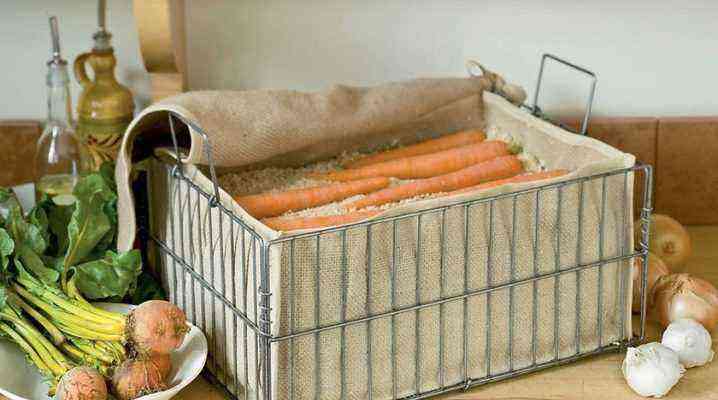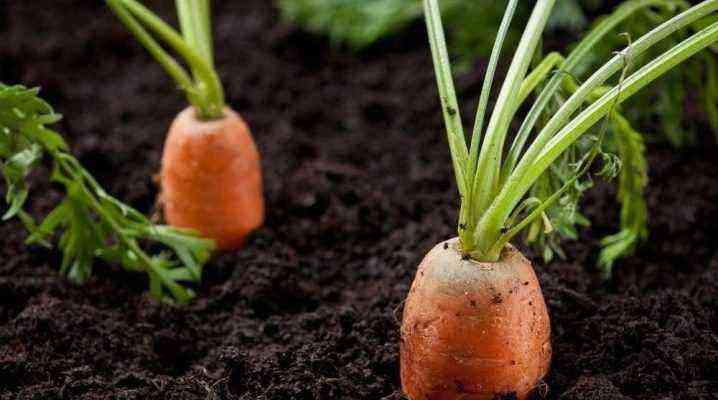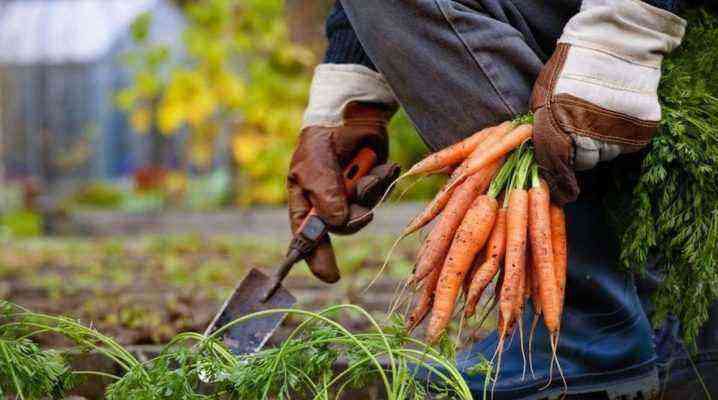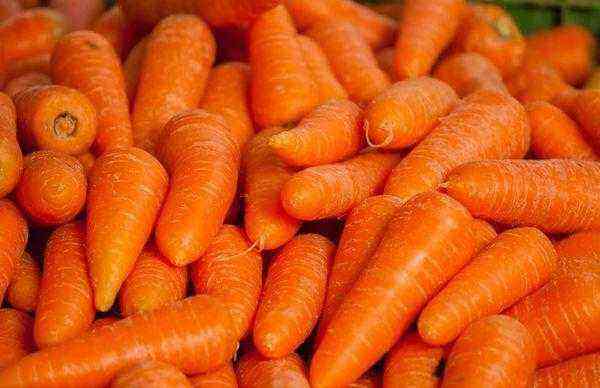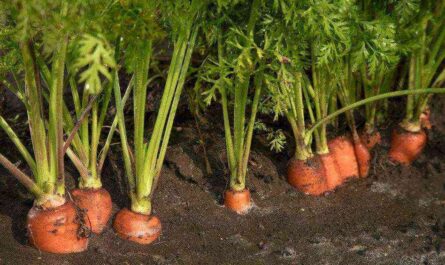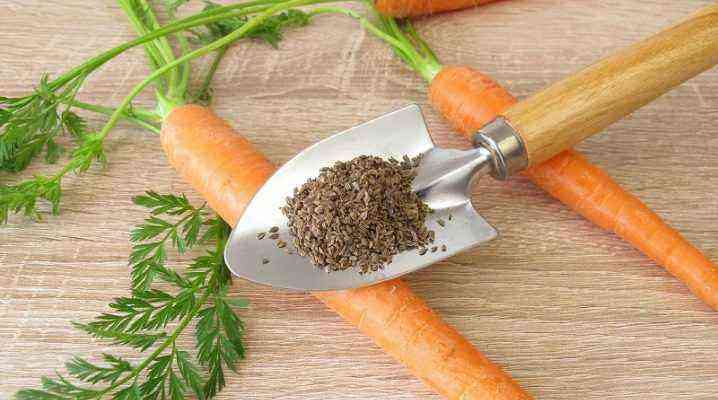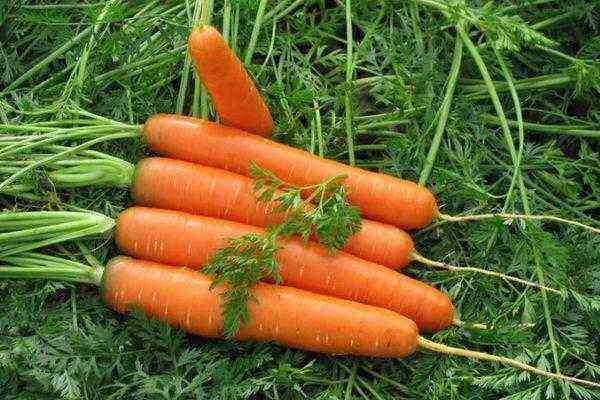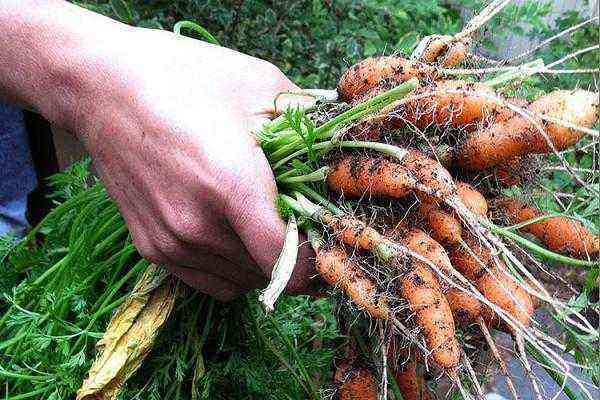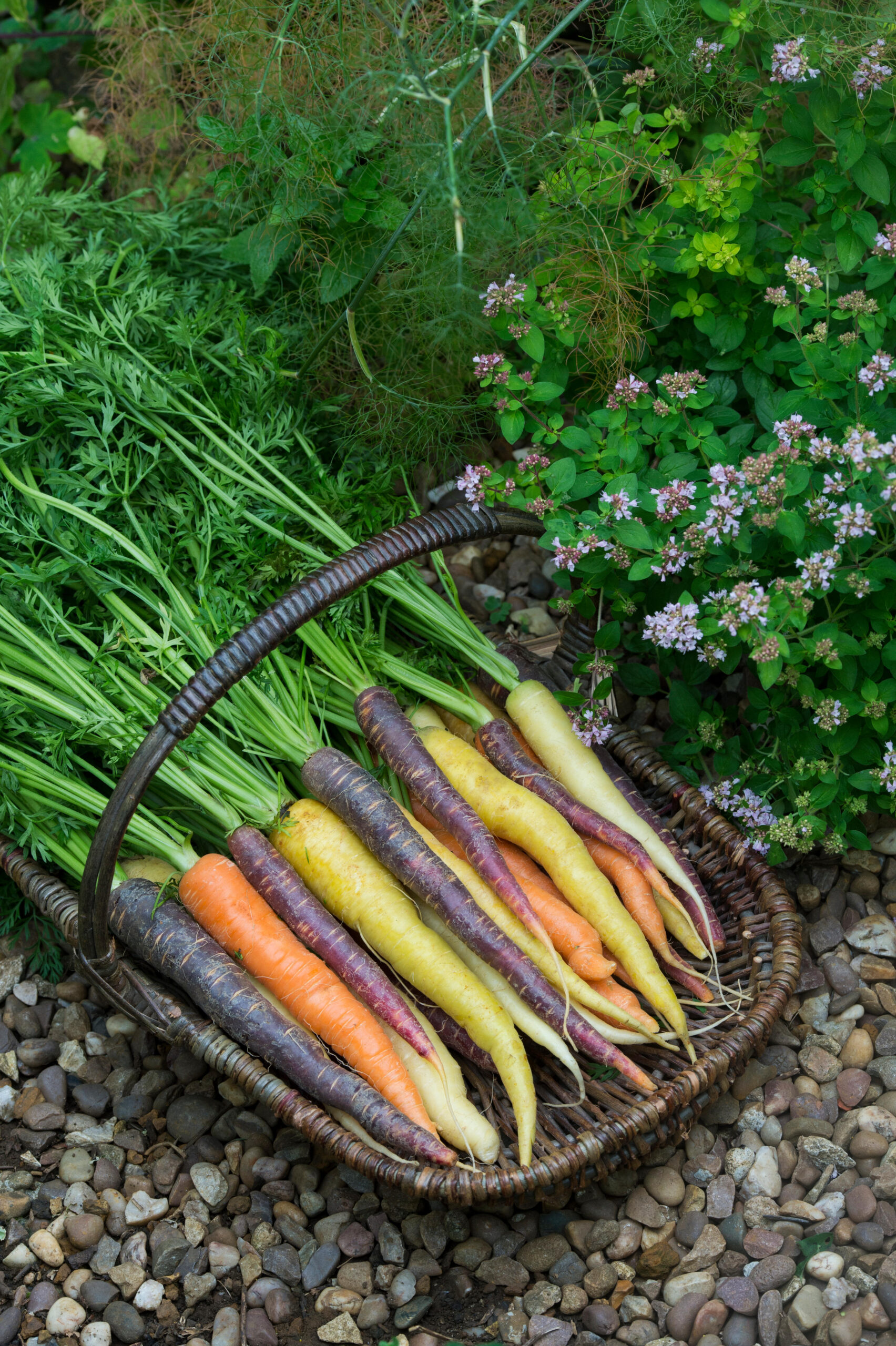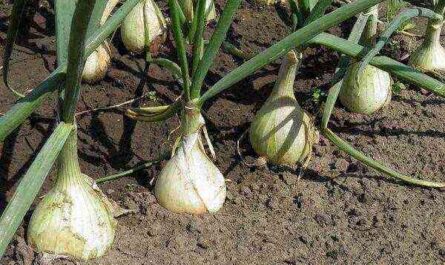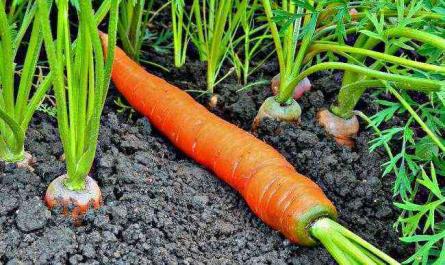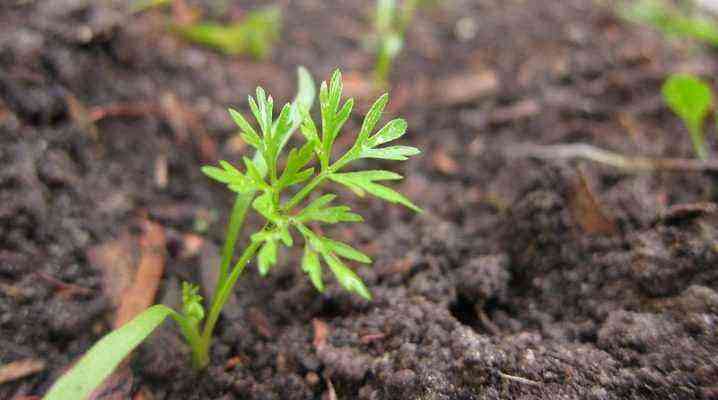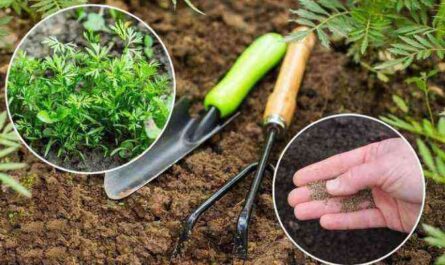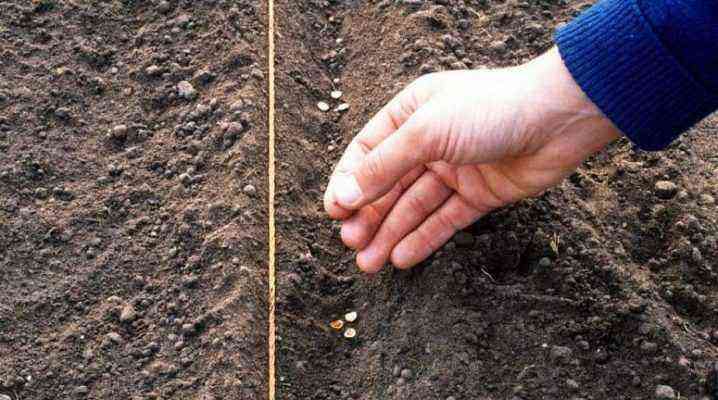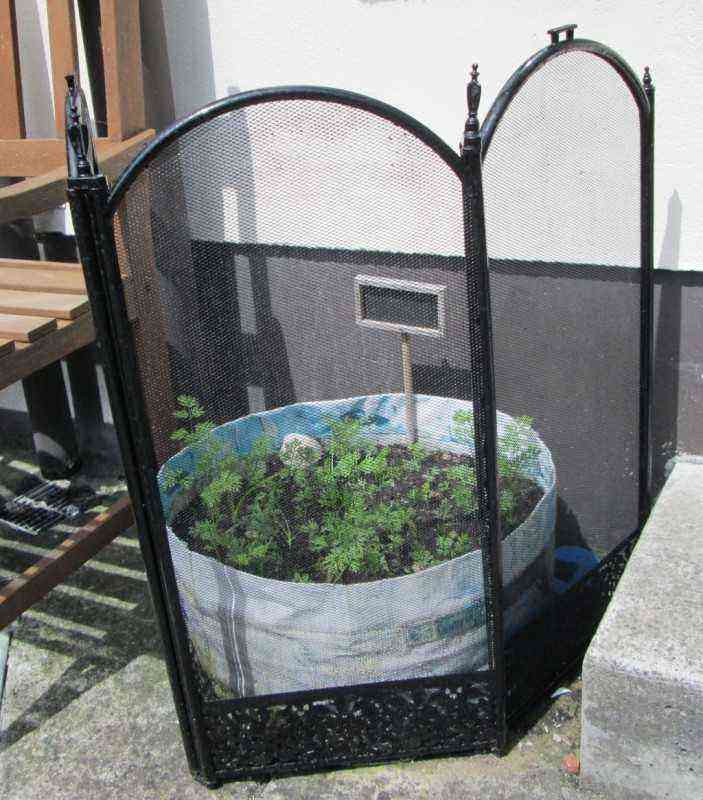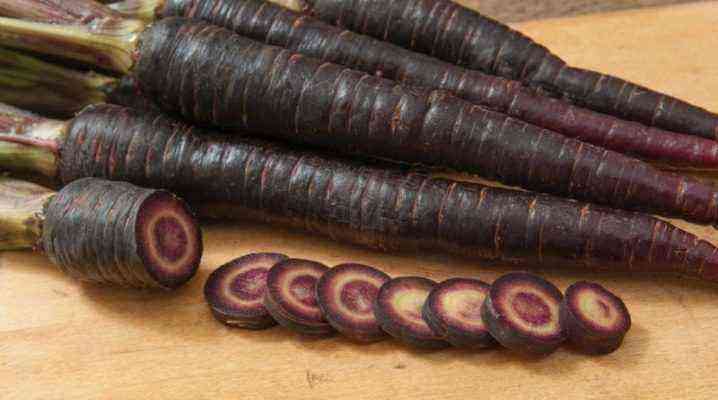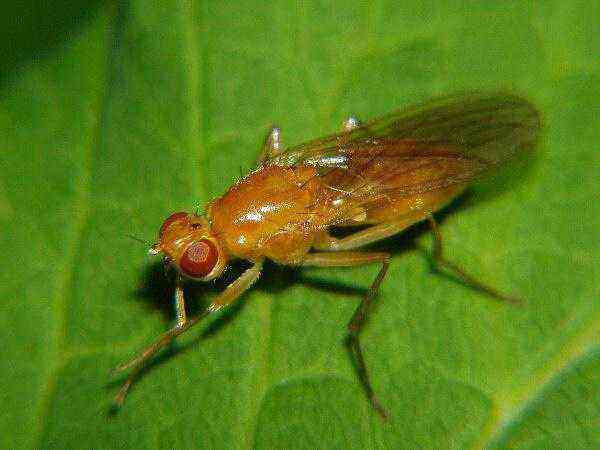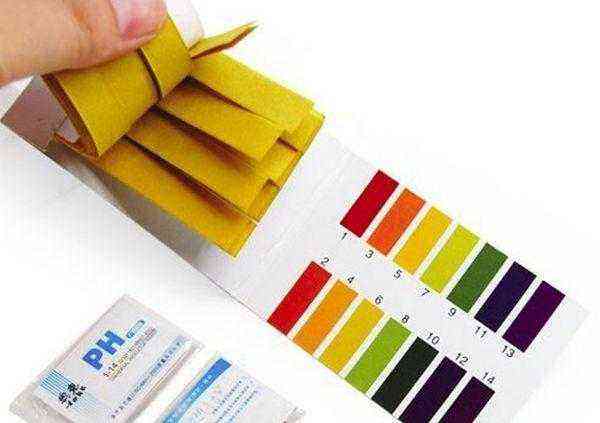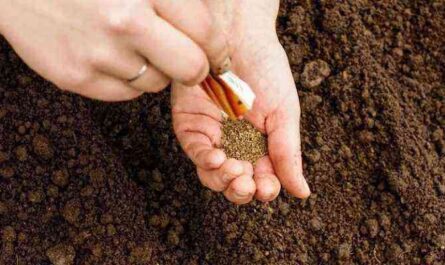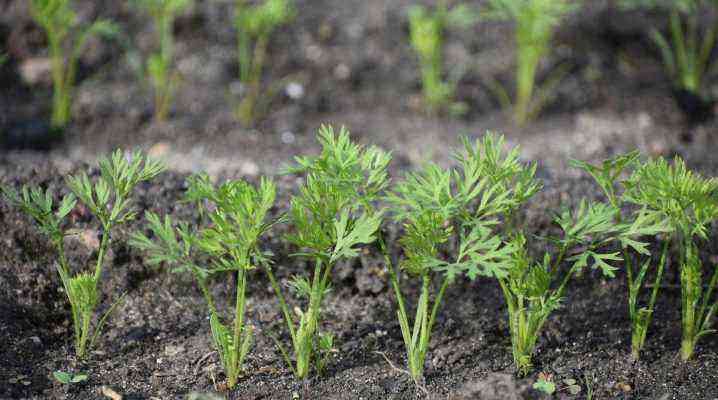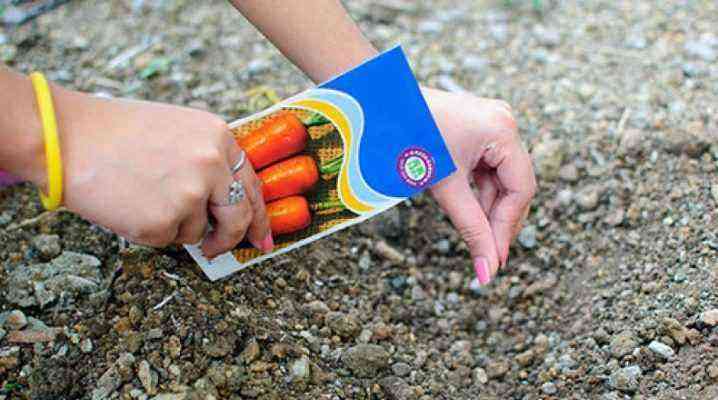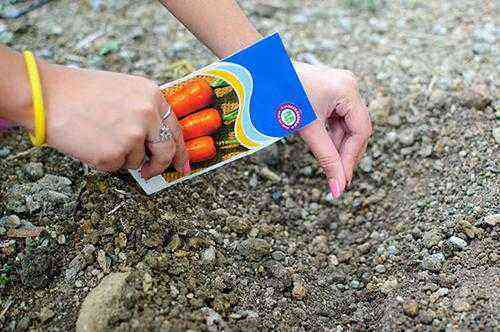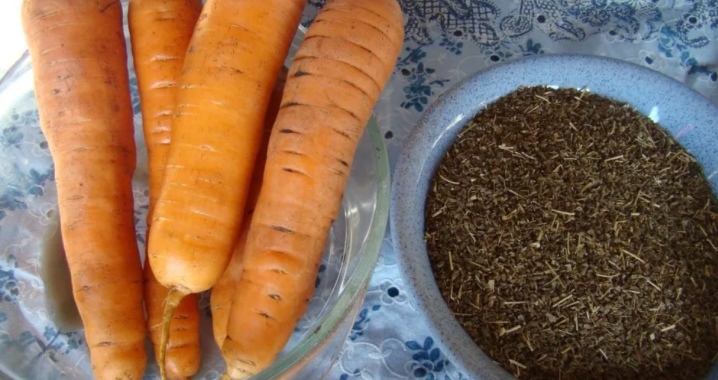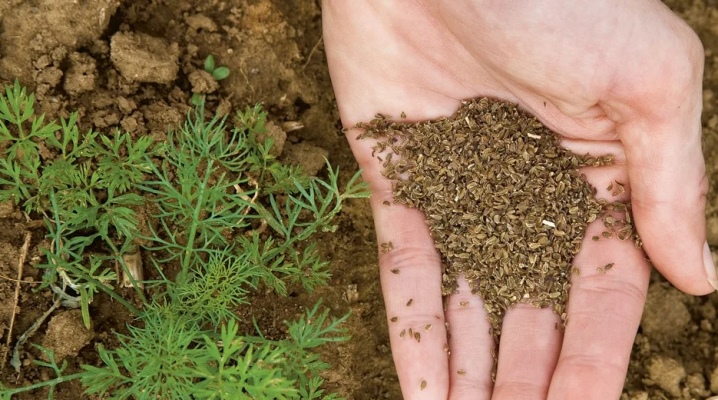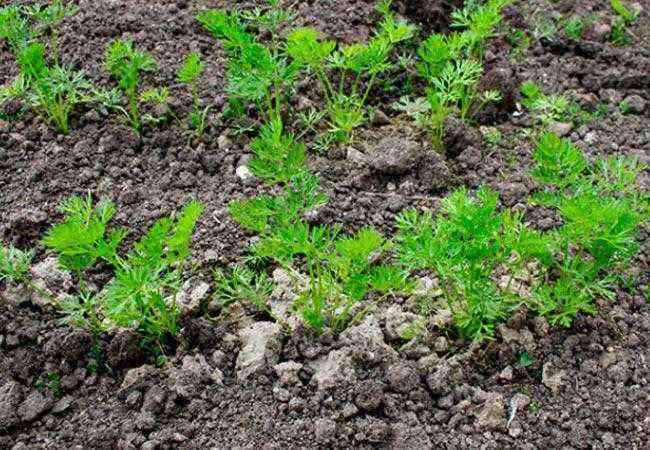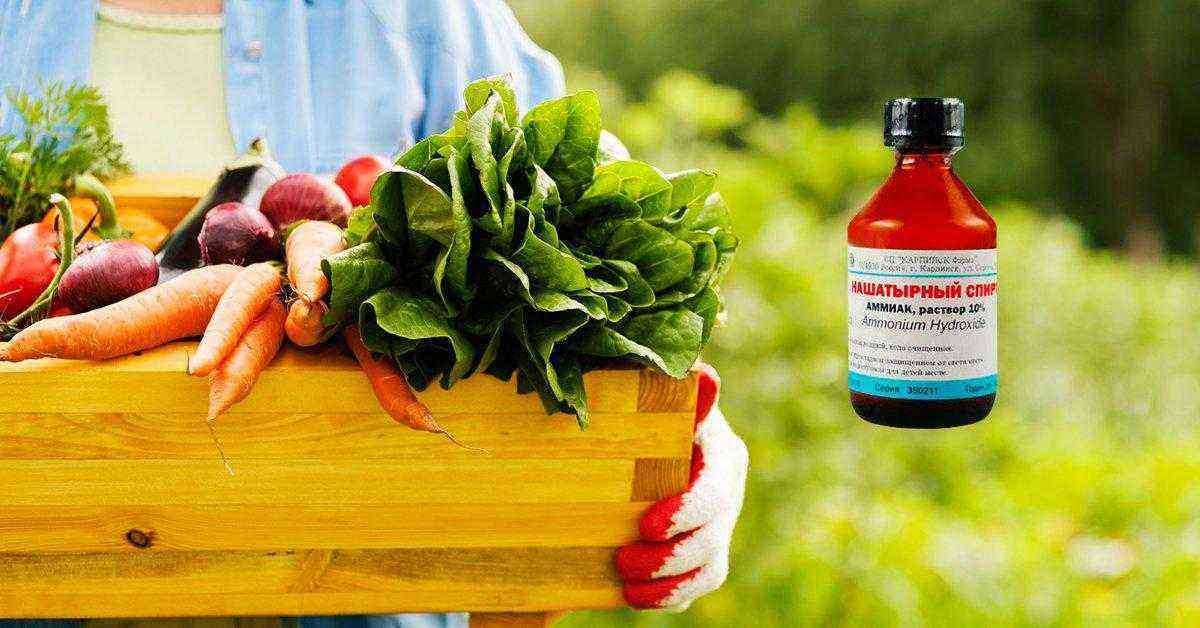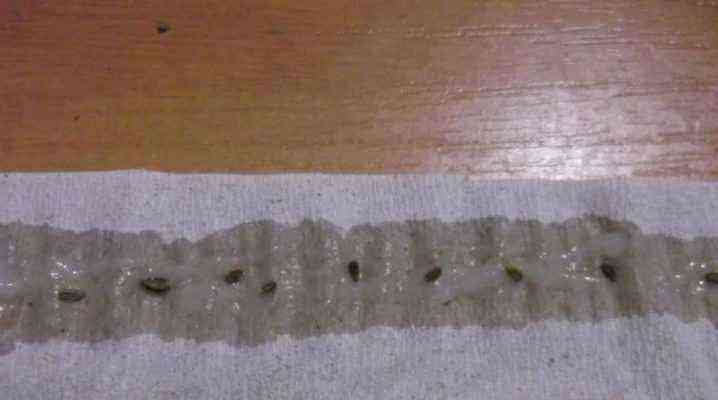Pests and various diseases of carrots can significantly reduce the yield, and in some cases even lead to the death of this crop. Prevention of many diseases begins at the stage of seed preparation. Timely measures taken against diseases and insect pests will not let the efforts of summer residents go to waste and will help grow an excellent crop of carrots.
Diseases
As a result of improper care of the carrot bed or due to adverse weather conditions, carrots can get sick. Fungi, viruses and bacteria living in the soil or on plant debris settle on some part of the plant or penetrate inside and lead to the death of carrots.
Any disease is easier to prevent than to cure. Plants, as a preventive measure, are sprayed with fungicides or chemicals, all kinds of home remedies. To increase immunity, the soil on which the crop grows is enriched with minerals.
Fomoz
The causative agent of this disease is a fungus. It can be found on seeds or plant debris. Seeds infected with the fungus lose their germination capacity. The infection is activated in wet weather. The fungus often affects root crops. They appear soft grayish-brown spots.
The disease rarely occurs in the field, more often during storage.
To combat the fungus, crop rotation is observed, a sufficient amount of potash and phosphorus fertilizers are applied to the soil. As a preventive measure, root crops are treated with Fitosporin-M before storage.
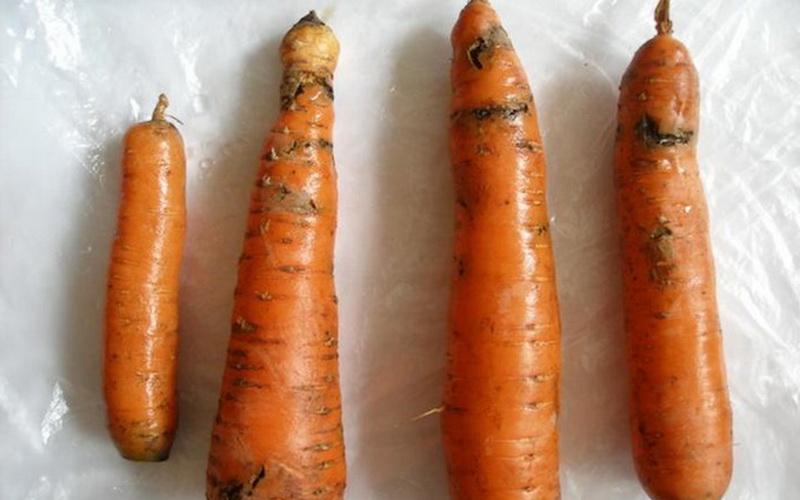
White rot
This fungal disease is rare in carrot beds. The pathogen infects root crops during storage. Carrots develop a white airy coating and dense dark sclerotia. The tissue of the root crop does not change color, only softens at the site of the lesion.
Carrots can become infected with the fungus while still in the field, but the disease is activated later, during storage of the crop in a warm, damp room. As a preventive measure, plants in the 4-leaf phase are sprayed with Hom. In the process of growth, it is desirable to fertilize the culture with potassium, to ensure optimal storage conditions for the crop (1-2 degrees Celsius).
Gray mold
This fungal disease often develops on root crops at the time of storage. Whitish-gray spots appear on carrots, under which there is a brown affected tissue. To prevent the development of rot, vegetables are provided with proper storage. For prevention, plants are sprayed with Hom, and the soil is disinfected with copper sulphate.
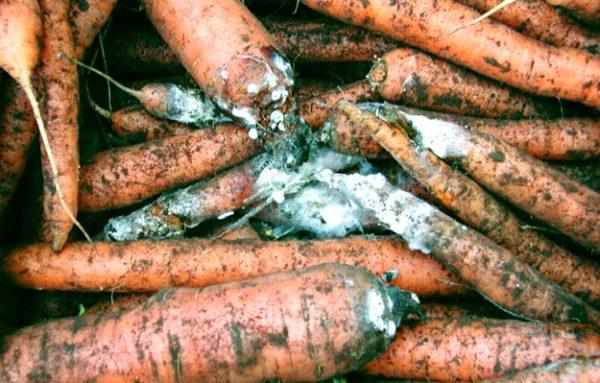
Risectoniasis
The disease can be recognized by the yellowing and drying leaves of carrots. The causative agent is a fungus that lives in the soil. It infects the root crop. Grayish spots appear on carrots. The surface of the root crop turns brown and is covered with a purple bloom of mycelium. Subsequently, black sclerotia appear. The root crop dries up or rots. Infected areas of the garden are limed, more potassium and phosphorus are added to the soil.
Alternaria
On young plants, the infection appears as a black leg. In a later period, the disease leads to yellowing, drying and wilting of the leaves. During storage, black rot develops on root crops. For prevention, plants are sprayed with Rovral.
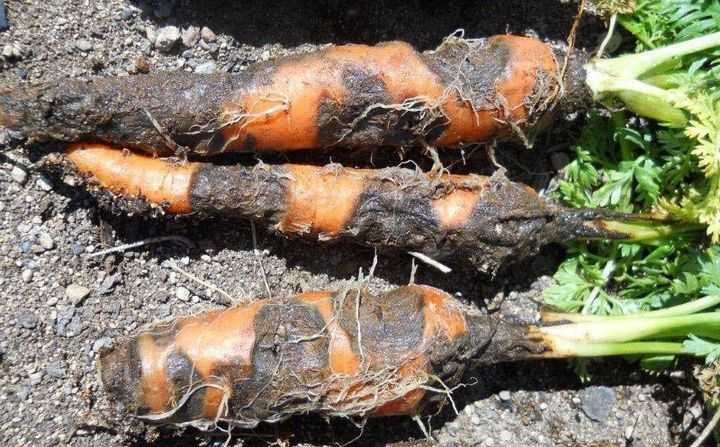
Bacteriosis
When infected with this infection, the leaves turn yellow, curl and dry. Root crops are affected by bacterial rot during storage. Soft weeping spots appear on carrots. Root crops become covered with mucus, become soft and watery. The infection develops if wet carrots are sent for storage or if root crops are stored in a humid and warm room.
To combat bacteriosis, the seeds are treated with TMTD. Resistance to infection develops with the introduction of potassium and phosphorus into the soil and a decrease in the use of nitrogen.
Cerkosporoz
Fungal disease develops in wet weather. Light brown spots appear on the leaves, later they darken. The leaves wither, and the root crops develop poorly and grow small. For treatment, Bordeaux mixture, Fitosporin, Trichodermin, Bravo, Quadris preparations are used.
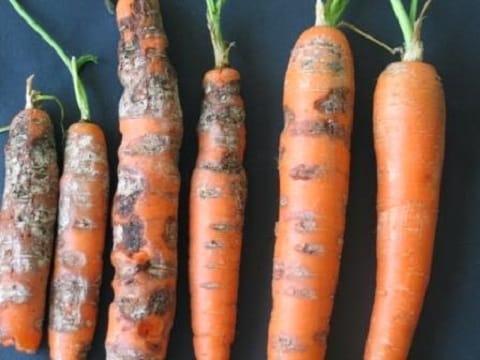
brown spot
The causative agent (fungus) affects leaves and roots. Numerous brown spots appear on the leaves, then the leaves turn yellow, twist, wither. Brown rotten spots appear on root crops. In humid weather, the spots are covered with a gray coating of conidia. For treatment, fungicides Quadris and Bravo are used. For prevention, Bordeaux mixture and copper oxychloride are used.
Mučnistaâ rosa
Signs of infection: the leaves are covered with a white coating that looks like flour. Subsequently, they turn brown and dry. Infected root crops grow poorly, become sinewy. To strengthen the immune system, plants are sprayed with Baikal-M and Immunocytofit. For treatment, Fitosporin-M, Gamair, Trichodermin, Gliocladin are used. Suppresses the development of the fungus solution of rapeseed oil.
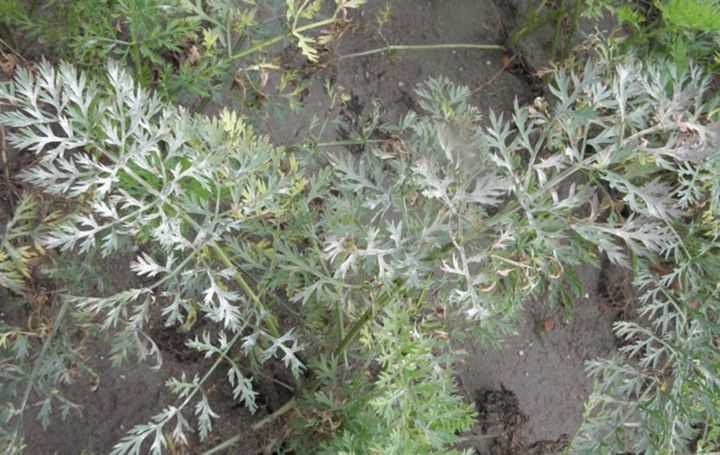
Fuzarioz
Fusarium rot is caused by a fungus. Dry rot appears on the affected root crops, subsequently the carrot dries up. The rot may be wet. Infected tissue becomes brown, soft. For prevention, plants are sprayed with Bordeaux liquid, and treated with fungicides before storage.
Pests and methods of dealing with them
Insect pests eat leaves and roots. If you do not fight them, you can completely lose the crop. Insects come to the carrot bed from the ground or fly in, crawl from afar in search of food.
Before you start fighting a pest, you need to determine its name. Insecticides, chemicals, folk remedies are used against insects.
carrot fly
This insect looks like an ordinary fly – it has two transparent wings, a reddish-yellow head and a small black body. In spring, the female lays her eggs in the ground near the carrots. Worm-like yellowish larvae settle in the root crop and make moves there. In the affected plant, the leaves turn yellow, the roots rot. This insect prefers a moist and shaded area. Fresh manure introduced before sowing activates the development of flies.
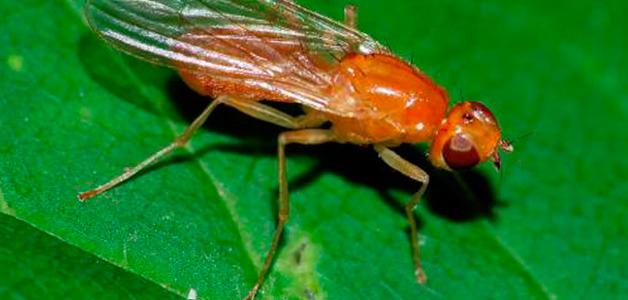
For prevention, Prestige is used, seeds are treated with it before sowing. To repel flies, Karate and Arrivo are used. Against larvae are intended: Mukhoed, Bazudin. A fly will be scared away by marigolds planted near, onions, garlic. The beds can be sprinkled with a mixture of sand and tobacco dust.
Listobloška
It is a pale green tiny insect with transparent wings. Lays eggs on carrot leaves. It feeds along with the larvae on plant sap. Insects winter on coniferous trees, fly out in May. Affected leaves become curly, but almost do not change color. Insects can reduce crop yields. Insecticides are used against them (Alatar, Borey, Vantex).
umbrella moth
This is a small butterfly from the subfamily of flat moths. The insect has two pairs of wings – front (brown) and rear (gray). The moth lays eggs on the leaves, from which small brown caterpillars emerge. They feed on the juice and leaves of carrots. To exterminate the moth, the culture is sprayed with Chlorophos, Entobacterin, Lepidocide, Bitoxibacillin. A decoction of tomato tops helps from an insect.

Winter Scoop
Butterfly with large brown front and slightly smaller gray hind wings. Leads a nocturnal lifestyle. Together with large greenish caterpillars, it eats young leaves of carrots.
To destroy the scoops, the earth is plowed, loosened, cleared of weeds. Insects are eaten by birds, die from black banhus larvae settling in their body. Preparations protect against scoops: Fitoverm, Agrovertin.
Naked Slugs
This oblong, soft, light brown, snail-headed insect has no shell. It feeds on young shoots and growing root crops. Leaves a wet, sticky residue behind. It is a carrier of fungal and bacterial infections. Hiding in the ground or under leaves, prefers moist soil. From slugs, soil disinfection with lime or saline helps.

Wireworm
Light brown oblong larvae of click beetles with a rigid body. This insect eats root crops, makes moves in them. The wireworm also feeds on potato tubers. Lives in the ground, does not like drought and rain. From the insect, fertilizers containing ammonia (ammonium chloride, ammonium nitrate) and lime help.
carrot aphid
These are tiny light green soft-bodied insects. They settle on the leaves in colonies. They feed on plant sap. Damaged leaves from lack of nutrition turn yellow and curl, root crops do not grow well. Tobacco infusion or ash-soap decoction helps with aphids. For the fight, drugs are used: Fitoverm, Akarin, Commander, Biotlin.

Exclamation scoop
Brown moths lay larvae, which hatch into brown caterpillars. Insects harm carrots. Insecticides save from scoops (Samurai, Clonrin).
Gall nematode
Light brown small worms that live in root crops. If tubercles appear on carrots, it means that insects have laid eggs in them. Root crops affected by the nematode can no longer be saved. The insect lives in the soil, actively reproduces in hot and humid weather. Treating the soil with formalin and avermectins saves from the nematode.
Medvedka
A large brown insect with a strong shell and powerful jaws. Lives in the ground, along with the larvae, feeds on root crops. A solution of kerosene, washing powder saves from the bear. Plants and the ground around them are sprinkled with pepper or dry mustard.

Rodents
Carrots are harmed by the common vole and field mouse. These are small (up to 12 centimeters) brown rodents. They dig holes in the ground and build nests there. They feed on root crops. From rodents, deep plowing of the soil before sowing, poisoned baits, and chemicals for killing mice help.
Preventive measures
Not only chemical or biological agents, but also preventive measures protect against diseases and insects that harm carrots. If you follow the rules of crop rotation and regularly care for the garden and plants, you can avoid many problems and get an excellent harvest of carrots.
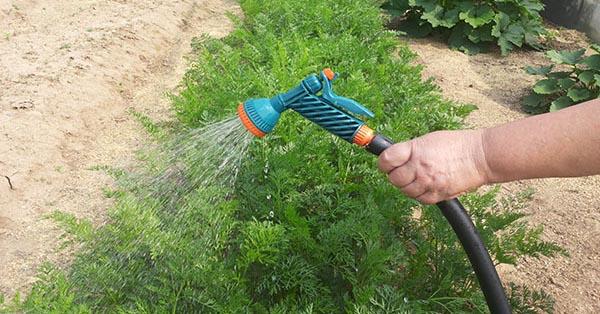
Agricultural practices
Compliance with the agricultural technology of culture helps to create optimal conditions for development. Carrots get sick less and are less likely to be attacked by pests if regular care is organized and a number of preventive measures are taken.
Preparing the soil in autumn
It is advisable to add organic supplements to the garden in the fall. For 1 square meter of land take 3-4 kilograms of manure. Before winter, deep digging of the soil is practiced, the earth has been limed since autumn (300 grams of lime per 1 square meter).
Right Ancestors
Growing carrots is possible in the garden after such crops: pumpkin, tomatoes, onions, potatoes. It is undesirable to sow seeds after cucumbers, zucchini, celery and parsley. Carrots can return to their previous garden only after 3-4 years.
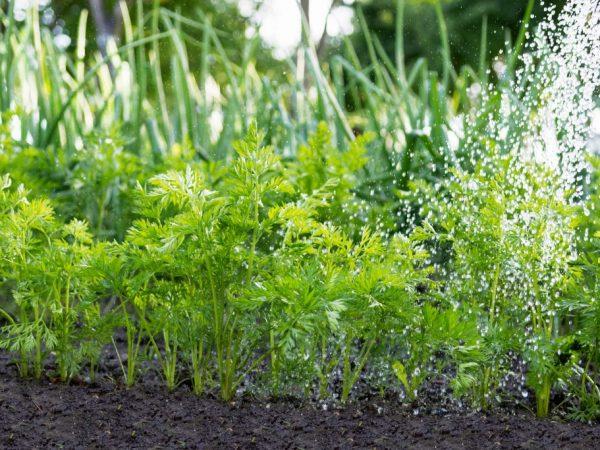
fertilizers
Carrots will hurt less if the garden bed is fertilized with potash and phosphorus fertilizers. Superphosphate and potassium nitrate are applied in the spring, before sowing seeds. 1 grams of each fertilizer is taken per 50 square meter of the plot. Nitrogen is applied with care.
With an excess of nitrogen substances, the roots will rot, and the tops will grow rapidly. In the process of development, carrots are fertilized several times with potassium and phosphorus. A solution of wood ash, boric acid, complex fertilizers is introduced into the soil.
Thinning, weeding and mulching
You can get large root crops if young seedlings are thinned out, and the ground near them is loosened and weed control is removed from the garden. In the process of growth, the culture needs hilling. This agricultural practice protects root crops from overheating. If the ground is mulched with rotted sawdust, the soil will not lose moisture, and weeds will not be able to break through from under the mulch.
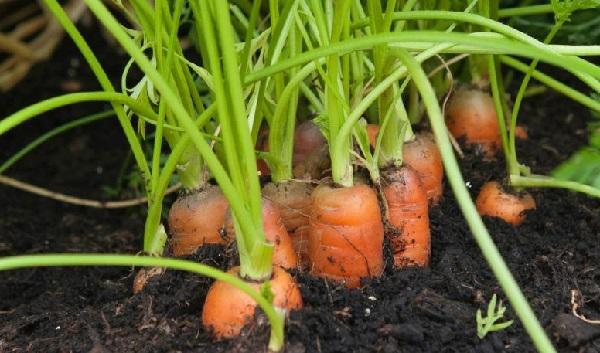
plant waste
It is advisable to remove plant residues and weeds from the garden. Insects and a variety of fungi and bacteria love to settle in them. Garbage removal prevents the appearance of larvae that are harmful to the crop.
Good neighbors
Near the carrots in the neighboring garden, you can plant onions, garlic, tomatoes – these are the right neighbors. Away from this crop, it is desirable to sow dill, celery, anise, horseradish, beets. Marigolds planted near marigolds and calendula will scare away pests from carrot beds.
Seed protection
Before planting on the garden, it is advisable to disinfect carrot seeds in a solution of potassium permanganate. To protect against soil pests, the seeds are pickled in a solution of Prestige or Matador, Nuprid, Commander Extra.
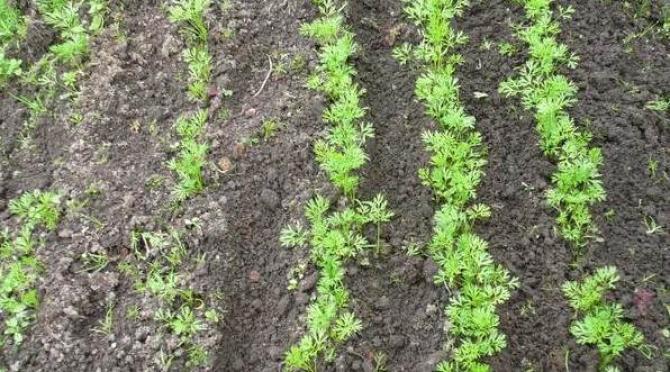
Chemical remedies for diseases
Many fungal and bacterial diseases are treated with chemicals and fungicides. Such drugs destroy pathogens and require careful use.
Bordeaux liquid solution
Means based on copper sulphate and lime. The solution is able to protect carrots from many fungal diseases. The powder is bought at the store and diluted with water. Plants are sprayed with a weak solution in early summer.
Preparation Hom
It is a fungicide containing copper to control fungal diseases. The leaves are sprayed with a solution based on this drug during the growing season. Processing is carried out in dry and calm weather in the evening.
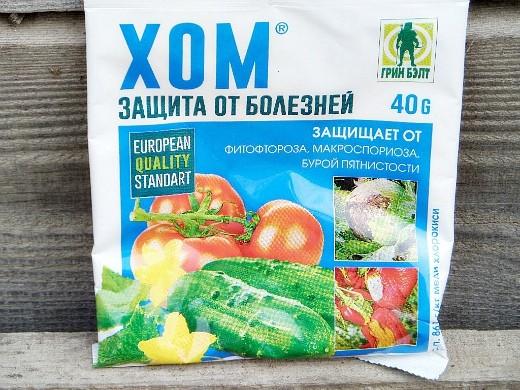
Rovral
This fungicidal agent is used for spraying plants and dressing seeds. The drug prevents the germination of fungal spores. The solution can be treated with root crops before storage.
Topaz
Fungicidal drug for the fight against fungal diseases. Plants sprayed as a prophylaxis will not get sick for several weeks. For processing carrots, a weakly concentrated solution is prepared.
Chorus
A fungicidal agent that has a protective and therapeutic effect. It is not washed off with water, as it quickly penetrates into the culture. A solution of low concentration is prepared at the beginning of summer and a carrot bed is sprayed with it.
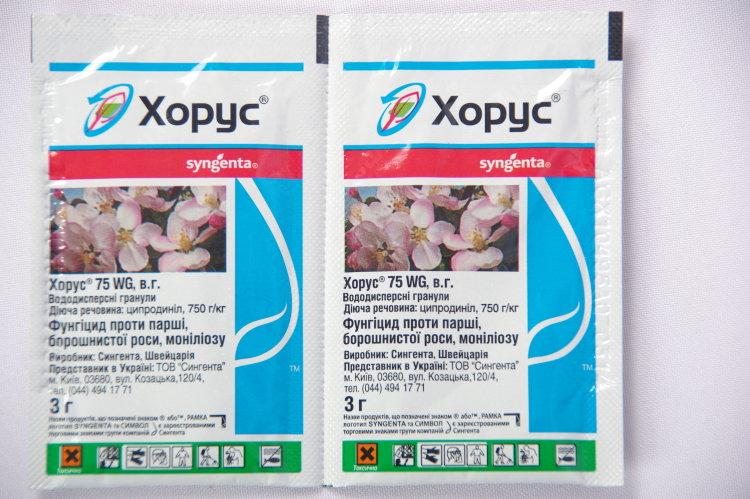
Decoction of tomato tops
Pests of the crop, especially the carrot fly, can be fought with a decoction of tomato tops. This folk remedy repels insects. For 1 kilogram of greens, take 2 liters of water and prepare a decoction for 30 minutes. Give the broth to brew for 3 hours. Dilute with warm water, add soap shavings and spray them with carrot beds.
Special insecticides
Insecticides help with insects. With the help of them, the soil and the plants themselves are cultivated. Insecticides are either chemical or biological.
Chemical are poisons that act instantly and can accumulate in plant tissues (Commander, Biotlin, Aktara). Biological preparations are non-toxic. Such products (Fitoverm, Aktofit) can be used several times, up to the extermination of all insects.

Answers to questions
Question number 1: why do carrots have light tops?
Answer: the leaves lighten, turn yellow with a lack of nutrients or when the culture is damaged by a fungus. It is advisable to fertilize the soil with a complex fertilizer, and treat the plant with a fungicide.
Question number 2: why is the root crop light?
Answer: there are varieties with light root crops. Carrots turn white if there is a lot of nitrogen fertilizer in the soil.
Question number 3: why does the green tops turn yellow and dry out?
Answer: Carrot leaves turn yellow due to various fungal infections. It is advisable to water the diseased plants abundantly, apply potash and phosphorus fertilizers. Treat with fungicides, and if insects are found, with insecticides.
